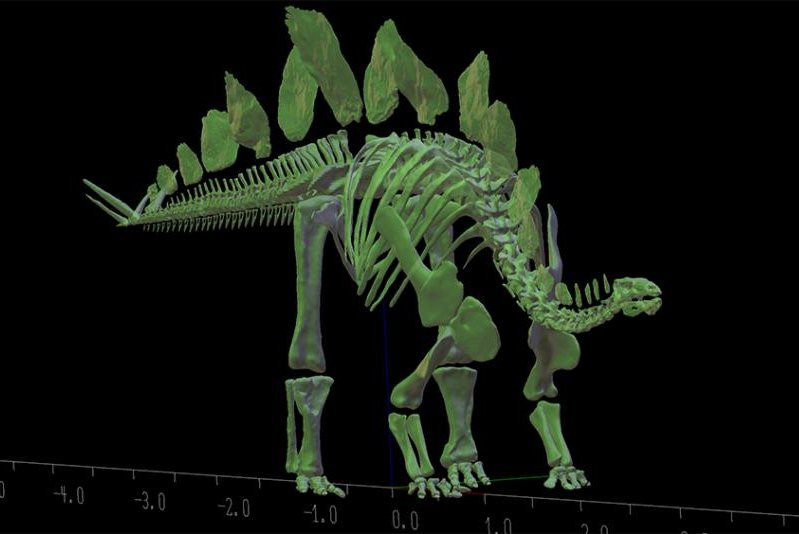While scientists estimate that the stegosaurus weighed about 5 short tons its brain weighed only 2 8 oz and was nearly the size of a lime

Stegosaurus: A Remarkable Herbivorous Dinosaur with a Surprisingly Small Brain

The Stegosaurus, a majestic dinosaur that roamed the Earth during the Late Jurassic period, captivates scientists and fossil enthusiasts alike. With its iconic array of plates and formidable-looking spikes, this herbivorous creature has left a lasting impression on our understanding of prehistoric life. While scientists estimate that the Stegosaurus weighed about 5 short tons, it’s astounding to note that its brain was significantly smaller in comparison, weighing only around 2.8 ounces – about the size of a lime!
A Unique Anatomy and Stegosaurus’ Unassuming Brain Size

The Stegosaurus possessed a fascinating body structure that set it apart from its fellow dinosaurs. Its most distinctive feature was, undoubtedly, the double row of large bony plates adorning its back. These plates, formed by ossified skin, were likely covered with keratin, giving them a toughened texture. Serving various purposes including thermoregulation, defense, and courtship displays, these plates have contributed significantly to the Stegosaurus’ popularity.
Contrary to the immense size of the Stegosaurus, its brain appears to have been comparatively diminutive. Scientific studies have revealed that this dinosaur’s brain was roughly equivalent in size to a lime, weighing a mere 2.8 ounces, which accounts for only 0.04% of its total body weight. This fact may astonish many, given the Stegosaurus’ large stature. However, it is important to remember that brain size doesn’t always directly correlate to intelligence or behavioral capabilities.
Insights into the Stegosaurus’ Limited Intellectual Capacity
While we may be tempted to associate a small brain with reduced cognitive function, it’s crucial to consider the ecological niche in which the Stegosaurus thrived. As a herbivorous dinosaur, the Stegosaurus primarily relied on its feeding strategies, social behaviors, and sensory capabilities rather than higher intellect. Its brain, though compact, likely facilitated essential functions such as instinct-driven responses, motor control, and basic sensory processing.
By examining the Stegosaurus’ skull, scientists have gained insights into the structure and possible functions of its brain. Despite its small size, the Stegosaurus brain had distinct regions associated with olfaction, vision, hearing, and motor coordination. These features indicate that the Stegosaurus had adequate sensory capabilities and coordination to navigate its environment and fulfill its dietary requirements.
Comparative Analysis of Brain Size in Dinosaurs
To put the Stegosaurus’ brain size into perspective, scientists have conducted comparative analyses with other dinosaur species. Interestingly, during the Late Jurassic period, the Stegosaurus’ contemporaries, such as the Allosaurus and Diplodocus, also exhibited relatively small brain sizes concerning their body mass. This suggests that larger dinosaurs might have faced similar limitations in terms of brain size-to-body ratio.
The study of dinosaur neurology and brain size provides valuable insights into the evolution and behavior of these extraordinary creatures. By expanding our understanding of the Stegosaurus’ cognitive limitations, we gain a better appreciation for the complex interplay between brain size, ecological adaptation, and survival strategies throughout Earth’s history.
Source: Wikipedia - Stegosaurus
Related Posts
Quick Links
Legal Stuff

